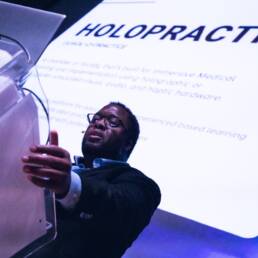A Letter
For years now I’ve been studying various emerging technologies and applied sciences. Of which, Extended Reality has been a particular focus-endeavor I’ve been watching to better understand its native positioning, growth-to-current standings and more importantly, where it’s particular ecosystem is heading.
Within the extended reality realm, we’ve known for some time which industries could benefit and are most likely to early adopt: aviation, manufacturing, entertainment, automotive, sports, construction, fashion, medical, so-forth-and-so-on. Of these industries, it came to me that the medical industry was to be the most challenging, telling and narratively speaking, widest of them all for use-case data extraction and overall XR for good.
With this intrigue of more than just curiosity, I began to explore the past and present uses of XR technology in the health and wellness industry as a whole.
In my studies, I’ve come to find that from the 80s on, there’ve been those who’ve been exploring the relationship between cognitive perception of virtual space to the human mind and how to optimize these experiences.
Decades in, we’re seeing great refinements by those who’ve been taking the research of the human body and spatial computing technology to better understand what could be understood, seen and amplified using XR technology in the medical arena with the best physical, psychological, environmental, hypo and hyper real focus of fidelity.
I built the Holopractice incubator for immersive development and collaboration. To put greater emphasis and attention to the benefits of such technology in use and what it can do for the medical and scientific ecosystem.
I’m grateful for the opportunity.
Kindly,
Christopher Lafayette
